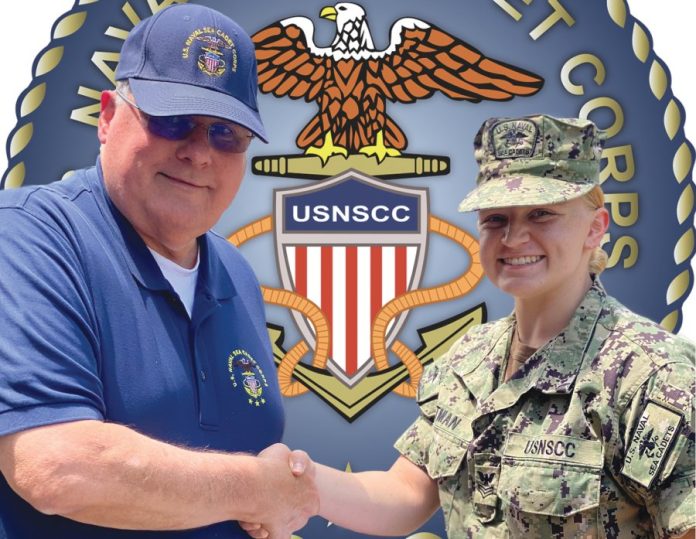The only regret that retired Senior Master Sgt. Scott Voigt has is that he didn’t get involved in the Sea Cadets program sooner.
A Chicago native who grew up in California and moved to North Texas 45 years ago, Voigt joined his local youth chapter of the Sea Cadets, short for the United States Naval Sea Cadet Corps, in 1972. At the time, he was just shy of 16 and searching for more stability in his life. He would spend the next three years getting hands-on training in seamanship, sailing, and basic military instruction at nearby naval bases and other installations, and the experience ultimately set him on a path that would shape his life and career.
Fast-forward to today, and he’s doing all he can to give back what the Sea Cadets gave him.
“I had family issues growing up, and the Sea Cadets helped me get through them and put me on a path to success,” Voigt said.
He joined the Lone Star Squadron, a local chapter of Sea Cadets comprising cadets from Denton, Wise, Tarrant, Johnson and Ellis counties, eight years ago as an instructor and is now their Commanding Officer.
“I came back to help these kids chart their courses.”
Clearly, Voigt is sold on everything Sea Cadets has to offer. He’s also confident families in southern Denton County and beyond will agree, especially since there is a unit close to home. Sea Cadets is an immersive youth program supported by the U.S. Navy and Coast Guard. It was started in the 1950s and chartered by Congress in 1964 to ensure that children ages 10 to 18 learn the core values of honor, respect, commitment, and service. Voigt’s Lone Star Squadron has been the nation’s No. 1 combined Sea Cadets unit seven times in the past 12 years, and that’s saying something when you consider there are 5,285 cadets in 380 units nationwide.
There are two programs to choose from with the Lone Star Squadron of the Sea Cadets.
The Navy League Cadet Corps (NLCC) is for middle school students aged 10 to 13. The Naval Sea Cadet Corps (NSCC) is for ages 13 through the end of high school. Both sections wear uniforms, train in a disciplined environment, and advance through ranks that mirror the Navy, Merchant Marines, and U.S. Coast Guard. Instruction includes everything from basic military instruction and team building to advanced training in robotics, field operations, search and rescue, submarine training, aviation, Special Forces training, and more.
Cadet units typically meet one weekend per month or one night per week during the school year. Training away from home is during school vacation periods. Voigt said the initial cost to join is roughly $350, and the annual fee after that is roughly $100. Training fees are about $350 for a week to nine-day training program in the summer or winter.
It is also important to note that joining the military after Sea Cadets is not required. That said, many former cadets do enlist, and dozens attend service academies or ROTC. Cadets who complete the program have a leg up on either enlisting and going to boot camp or going the officer route through ROTC or one of the service academies.
“We have quite a few overachievers,” Voigt said. “One young lady wanted to go into aviation like her father and is now in the aviation program at Oklahoma University. She is working on becoming a commercial pilot. We have another cadet who went to ROTC, got their commission, and is now a pilot training at the Naval station in Pensacola, Florida.”
Interestingly, Voigt insists that Sea Cadets remains one of the best-kept secrets. In fact, it is often overshadowed by traditional summer camps and other extracurriculars that generate more press but can cost the average family significantly more money.
But that doesn’t mean Sea Cadets is any less important or can’t significantly impact a teenager’s life.
“It’s a shame because we’ve been around for a long time and have done some great things for kids nationwide,” Voigt said. “I’ve had kids go to four trainings in the summer because that’s what they were interested in. One of our cadets was selected for international training, where they teamed up with cadet programs worldwide. She got to go to Australia for two weeks.”
“When you’re 15 or 16, you usually don’t know what you want to do with the rest of your life,” he added. “We help these kids figure that part out and, for lack of a better term, chart their course.”
That’s what Sea Cadets did for him, and he’s confident that others will continue to experience the same life-changing benefits.
For more information on Sea Cadets, including ways to donate and how to get your child involved, please visit www.seacadets.org.



















